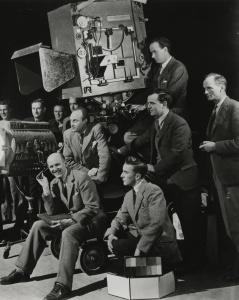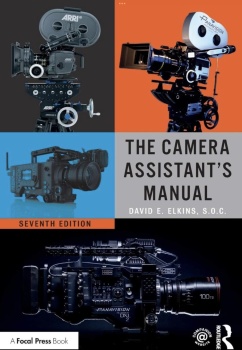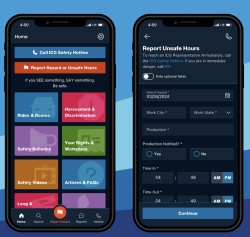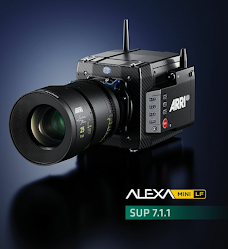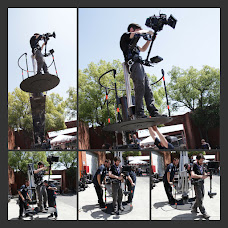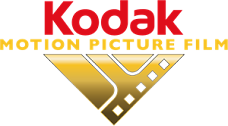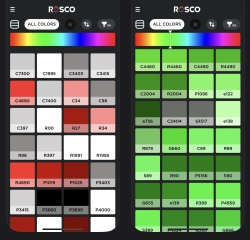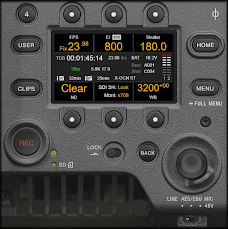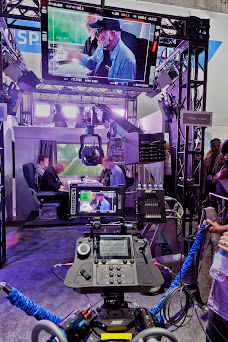Venice 2 is a full-frame digital cinema camera with internal X-OCN recording and choice of 8K and 6K sensors. 🎥🎬 It is a cinema camera created by and for the cinematographer. The camera comes with one of two full-frame image sensors, each offering exceptional picture quality. Thanks to new internal recording capabilities, users can capture even more colors and detail within the compact body they already know.
36 x 24-mm Full-Frame Sensor. VENICE 2 features one of two 36 x 24‑mm full-frame image sensors, designed specifically for the demands and performance of high-end cinematography. Each offers remarkable sensitivity, latitude and color rendition, and because the sensor blocks are interchangeable, users can easily switch between sensors—without any extra firmware—and can even use the sensor from their original VENICE. The new 8K sensor can capture images up to a maximum resolution of 8640 x 5760, while the established 6K sensor offers up to 6048 x 4032. Both offer powerful oversampling for incredible 4K images.
Super35 full height 2.0x squeeze Anamorphic. For anamorphic shooting and production, Super35 full height 2x squeeze anamorphic is supported.
Super35 17:9 and 16:9. These popular image sizes have native support in VENICE 2, and the 8K sensor makes it possible to capture 5.8K footage in these modes. Current Super35 mm PL mount lenses can be used as well.
More Colors for More Expression. VENICE 2 can exceed the BT.2020 color space, with a color range wider than DCI-P3. This means it can beautifully reproduce the true color of the scene in front of your lens. The camera also provides a broad palette in the grading suite, using the established workflow of Sony’s S-Log3 and Ultra-wide Color space, S-Gamut3. Plus, VENICE 2’s 6K and 8K sensors match colors almost perfectly, making your grading experience even better.
High Frame Rate. VENICE 2 can shoot at speeds of up to 120fps at 4K and 90fps at 6K, when using the 6K sensor. In combination with an anamorphic license, it also allows shooting at speeds of up to 75fps at 4K 4:3 and 72fps at 4K 6:5. With the 8K sensor, VENICE 2 can achieve up to 60fps at 8.2K and 90fps at 5.8K.
Interchangeable Image Sensors. VENICE 2 allows you to easily remove and replace the image sensor, swapping between the 8.6K and original 6K image sensor as required. This also means a 6K sensor can be swapped between VENICE and original VENICE 2.
Dual Base ISO. VENICE 2 features dual base ISO, meaning that the 8K sensor offers Base ISO3200 in addition to Base ISO800, while the 6K sensor has Base ISO500 and Base ISO2500. High Base ISO3200 excels in low-light High Dynamic Range capture, with an exposure latitude from 6 stops over to 10 stops under 18% Middle Gray, for a total of 16 stops. High Base ISO 2500 offers an exposure latitude from 6 stops over to 9 stops under 18% Middle Gray, for a total of 15+ stops.
Internal 16-bit X-OCN and 4K ProRes Recording in a Compact Body. New for VENICE 2, cinematographers and colorists can unlock the incredible creative possibilities of 16-bit X-OCN recording, without an external recorder. Users can enjoy the full dynamic range and color reproduction of the image sensor, capturing in 4K ProRes 4444 and 422 HQ. With such a compact design, and no external recorder, set-up is faster, simpler, and easier, particularly for gimbals, Steadicams, and drones.
Anamorphic Look. VENICE 2’s support for anamorphic lenses allows for the capture of breathtakingly beautiful images. When combined with the ability to shoot 4:3 and 6:5 aspect ratio at high horizontal resolutions, this can give users stunning lens flare, bokeh, and emotional impact. The 8K sensor can shoot 5.8K with an aspect ratio of 6:5, while the 6K sensor can shoot both 6:5 and 4:3 at 4K.
PL Lens Mount. VENICE 2 comes with the industry-standard PL lens mount and is compatible with all Super35 and full-frame PL lenses—spherical and anamorphic. The lens mount includes contacts that support Cooke /i Technology, and lens information is recorded as metadata, frame by frame. We have also added support for ZEISS eXtended Data.
Lever Lock Type E-mount. E-mount offers unsurpassed compatibility with Sony lenses. E-mount (lever lock type) gives users the ability to change lenses by rotating the locking collar rather than the lens itself, which means that in most cases lens support rigs don’t need to be removed, saving time during a production.
VENICE 2 6K Extension System. VENICE 2 users can expect the same image quality and integrity when using the robust CBK-3610XS Extension System, which makes VENICE 2 more mobile and discreet. The system is fully compatible with VENICE and VENICE 2 camera systems that use the 6K image sensor block* and is ideal for countless mounting set-ups and filming scenarios. These could include use with gimbals, handheld stabilizers, underwater and helicopter housings, and 3D/VR rigs, as well as in tight and unconventional spaces, such as in vehicles, on cranes, or Russian arms. *Extension System for VENICE 2 8K is planned to be released by early 2023
8-step Mechanical ND Filters. VENICE 2 follows the world-first of VENICE, with a servo-controlled 8-step Mechanical ND filter mechanism built into the camera chassis. It offers a massive ND of 0.3 (1/2 = 1 stop) to 2.4 (1/256 = 8 stops) range that reduces time lost on set changing external filters. The ND filters also greatly increase VENICE’s flexibility when being controlled remotely on drones and cranes, or in an underwater housing.
High performance, proven recording formats. VENICE 2 offers complete production flexibility. The camera supports internal recording of X-OCN or 4K ProRes recording onto AXS memory cards, removing the need to attach additional recording hardware.
X-OCN – 16-bit eXtended tonal range Original Camera Negative. Full 4K, 6K or 8K resolution, with extraordinary color reproduction, nicely suits Sony’s third-generation color development, S-Gamut 3. In particular, 16-bit scene linear tonal gradation retains the camera’s full dynamic range, with far greater capacity for visual expression than 10-bit or 12-bit digital formats.
16-bit X-OCN offers significant file size reduction, which makes working with full-resolution content from VENICE 2’s 8.6K or 6K sensor far more practical in terms of file transfer times and storage requirements.
Apple ProRes 4K. Apple 🍎 ProRes, including ProRes 4444 and Apple 4K ProRes 422 HQ, are popular in post-production, and VENICE 2 supports Apple ProRes 4K. This means there’s no need for transcoding; you can simply handle these 4K ProRes formats directly from the camera.
Technicolor 🌈Look Collection. The Look Collection for VENICE allows anyone to add the artistry and experience of Technicolor colorists to their VENICE productions. Free downloads of LUT (Look Up Table) files can be used for on-set monitoring, as well as be applied in post-production. Also included are .ART files, Sony’s new proprietary file format, which offers enhanced performance compared to 3D LUTs.
For more info about Sony Venice 2 visit, https://pro.sony/ue_US/products/digital-cinema-cameras/venice2














































